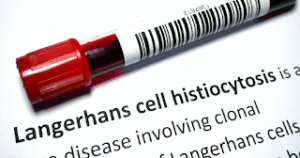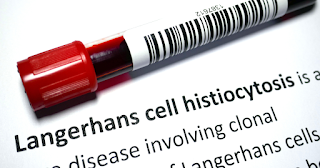Histiocytosis Awareness Month: Understanding the Rare Disease and Its Global Impact
Histiocytosis Awareness Month, observed every September, is dedicated to raising awareness about a group of rare disorders collectively known as histiocytoses. These disorders are characterized by an abnormal increase in the number of immune cells called histiocytes, which can lead to tissue damage and organ dysfunction. Despite its rarity, histiocytosis can have profound effects on the lives of those affected, making awareness and research crucial for improving outcomes.

Histiocytosis Awareness Month |
Understanding Histiocytosis
Histiocytosis refers to a group of disorders where histiocytes, a type of white blood cell, proliferate abnormally. These disorders can affect various parts of the body, including the skin, bones, lungs, liver, spleen, and the central nervous system. The most common forms of histiocytosis include:
- Langerhans Cell Histiocytosis (LCH): This type primarily affects children and can lead to lesions in bones, skin rashes, and lung damage. LCH can vary in severity from a single lesion to multiple organ involvement.
- Hemophagocytic Lymphohistiocytosis (HLH): A severe and potentially life-threatening condition where histiocytes and lymphocytes attack the body’s tissues, leading to severe inflammation, fever, and organ failure.
- Juvenile Xanthogranuloma (JXG): This typically benign condition often presents in infants and young children as skin nodules, though it can occasionally affect internal organs.
The exact cause of histiocytosis remains unknown, but it is believed to involve both genetic and environmental factors. The symptoms can vary widely depending on the type of histiocytosis and the organs affected, making diagnosis and treatment complex.
Importance of Histiocytosis Awareness Month
Histiocytosis Awareness Month plays a crucial role in educating the public, healthcare professionals, and policymakers about this rare group of disorders. Due to its rarity, histiocytosis is often misdiagnosed or diagnosed late, leading to delayed treatment and poorer outcomes. Raising awareness can lead to earlier diagnosis, better treatment options, and increased support for affected individuals and their families.
Organizations such as the Histiocytosis Association, Histiocytosis Canada, and Liam’s Lighthouse Foundation are at the forefront of these efforts, organizing events, campaigns, and fundraising activities throughout September to bring attention to the needs of the histiocytosis community.
The Color of the Campaign: Dark Blue
The color dark blue has been chosen to represent Histiocytosis Awareness Month. This color symbolizes strength, resilience, and depth, qualities that are reflected in the individuals and families affected by histiocytosis. Wearing dark blue or displaying dark blue ribbons during September is a simple yet powerful way to show solidarity with the histiocytosis community and to help spread awareness about the disorder.
Various awareness campaigns encourage individuals to “Go Blue for Histio” by wearing dark blue, lighting up buildings and landmarks in dark blue, and sharing information on social media using dark blue-themed graphics and hashtags. The “Go Blue for Histio” campaign, spearheaded by Liam’s Lighthouse Foundation, is a prominent example of how color can unify a community and draw attention to an important cause.
Dispelling Myths about Histiocytosis
As with many rare diseases, there are several myths and misconceptions surrounding histiocytosis. These myths can contribute to stigma, misunderstanding, and delays in diagnosis. Here are some common myths and the truths behind them:
-
Myth: Histiocytosis is a type of cancer.
- Truth: While histiocytosis shares some characteristics with cancer, such as abnormal cell proliferation, it is not classified as a cancer. However, certain forms of histiocytosis, like LCH, may require treatments similar to those used for cancer, such as chemotherapy.
-
Myth: Only children are affected by histiocytosis.
- Truth: Although some forms of histiocytosis, like LCH, are more common in children, adults can also be affected by histiocytosis. HLH, for example, can occur at any age.
-
Myth: Histiocytosis is always fatal.
- Truth: The prognosis for histiocytosis varies depending on the type and severity of the disorder. While some forms can be life-threatening, especially if not treated promptly, others may resolve on their own or be managed effectively with treatment.
-
Myth: There is no treatment for histiocytosis.
- Truth: Treatment options are available for histiocytosis and may include chemotherapy, immunotherapy, steroids, and surgery. The specific treatment depends on the type of histiocytosis and the organs involved.
Treatment Options and Institutions Specializing in Histiocytosis
The treatment of histiocytosis often requires a multidisciplinary approach involving oncologists, hematologists, immunologists, and other specialists. The treatment plan is tailored to the individual, depending on the type of histiocytosis, the organs affected, and the severity of the condition.
Some of the main treatment institutions for histiocytosis include:
- Histiocytosis Association (https://histio.org/): This organization provides resources, support, and information for individuals affected by histiocytosis. They also fund research initiatives aimed at improving diagnosis and treatment.
- Histiocytosis Canada (https://histiocytosis.ca/): A leading organization in Canada, Histiocytosis Canada supports research, raises awareness, and provides assistance to those affected by histiocytosis. They work closely with healthcare professionals to ensure that patients receive the best possible care.
- Liam’s Lighthouse Foundation (https://www.liamslighthousefoundation.org/): This foundation focuses on raising awareness and funding research for histiocytosis, particularly LCH. They also offer support to families dealing with the disease.
- The Periwinkle Foundation (https://periwinklefoundation.org/): While primarily focused on providing camp experiences for children with cancer and other life-threatening illnesses, The Periwinkle Foundation also supports children with histiocytosis through their programs and awareness campaigns.
- Histiocytosis UK (https://www.histiocytosisuk.org/): This UK-based charity funds research and provides support to those affected by histiocytosis. They are dedicated to finding better treatments and ultimately a cure for histiocytosis.
These institutions are critical in the fight against histiocytosis, providing not only treatment but also hope for a brighter future for those affected by the disease.
Conclusion
Histiocytosis Awareness Month is an important time to shine a light on a group of rare and often misunderstood disorders. By increasing awareness, dispelling myths, and supporting research, we can make significant strides in improving the lives of those affected by histiocytosis. The efforts of organizations, healthcare professionals, and the community during September are vital in fostering a deeper understanding of histiocytosis and ensuring that patients receive the care and support they need.
The dark blue color of the campaign serves as a powerful symbol of solidarity and resilience, reminding us of the strength of those who face histiocytosis every day. As we continue to raise awareness and support research, there is hope that one day, histiocytosis will be better understood, more effectively treated, and ultimately cured.
